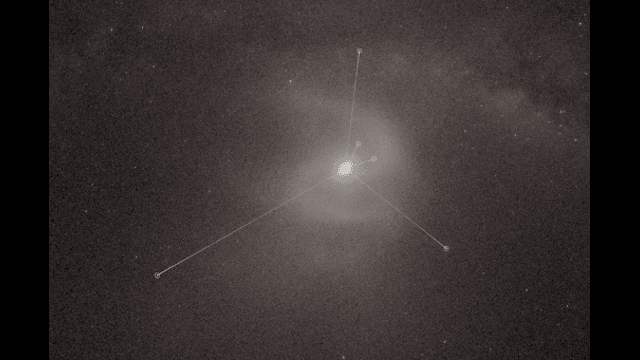
During an early test of the planetarium show, scientists and animators were surprised to spot a spiral shape behind the sun on the dome screen. The unexpected pattern appeared during a scene and caught everyone’s attention. CNN
A group of scientists made a surprising discovery while preparing for a planetarium show in New York. They found a spiral shape in the far edge of our solar system, in a place called the Oort Cloud. The discovery was not planned and happened during a test run of a scene for the show Encounters in the Milky Way.
What Is the Oort Cloud?
The Oort Cloud is a distant zone full of icy objects. It lies far beyond Neptune and is believed to be shaped like a giant sphere. It’s the place where some comets are thought to come from. No one has ever seen it directly because it’s so far and the objects there are very small.
The Unexpected Spiral
As the show’s team played a detailed animation of the solar system, they spotted a spiral shape near the sun. Astrophysicist Jackie Faherty was surprised. She asked David Nesvorny, a scientist who gave them the simulation data, if the spiral was real.
At first, Nesvorny thought it was a mistake in the animation. But when he checked his data, the spiral was really there. He later published a paper about it in a science journal.
A New Look at Old Data
Nesvorny said he never saw the spiral before because he hadn’t looked at the data in 3D. When he did, it became clear. To confirm it, he ran tests using one of the world’s most powerful computers. Every simulation he ran showed the same spiral shape.
Why Does the Spiral Exist?
The spiral is found in the inner part of the Oort Cloud. It likely forms because of the galaxy’s gravity. The pull of stars and dark matter in the Milky Way twists the orbits of the small icy objects, forming a spiral instead of a sphere.
The outer part of the Oort Cloud might still be shaped like a shell. But this inner spiral could change how we understand the solar system.
The Vera C. Rubin Observatory, on Tololo Hill near La Serena, Chile, will spend the next 10 years watching the night sky. This long mission could help scientists learn much more about the distant Oort Cloud. CNN
Challenges in Proving It
Even with powerful telescopes, it’s hard to spot objects in the Oort Cloud. The new Vera Rubin Observatory in Chile may help by spotting more icy bodies. But experts believe it may still not be enough to see the whole spiral.
Why It Matters
This discovery helps scientists understand how solar systems like ours grow and change. Some believe the Oort Cloud may even hold clues to the building blocks of life.
The find was exciting for Faherty. She called it a “dream” to present science this fresh to the public. Others, like Yale’s Malena Rice, said it changes how we imagine the solar system.
Still, many scientists agree more evidence is needed to fully confirm the spiral. But the discovery shows how new tools and fresh views can reveal hidden wonders in the sky.















